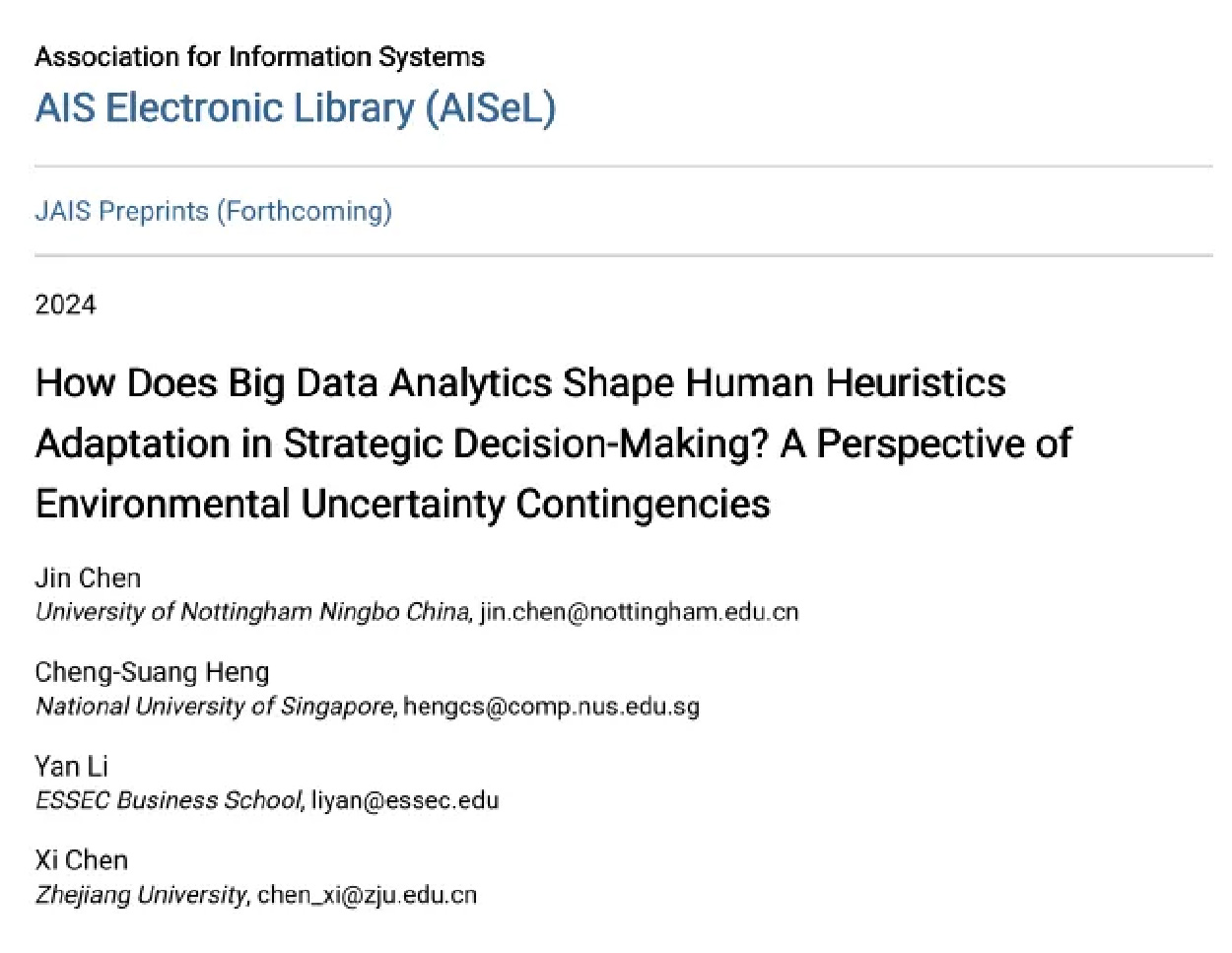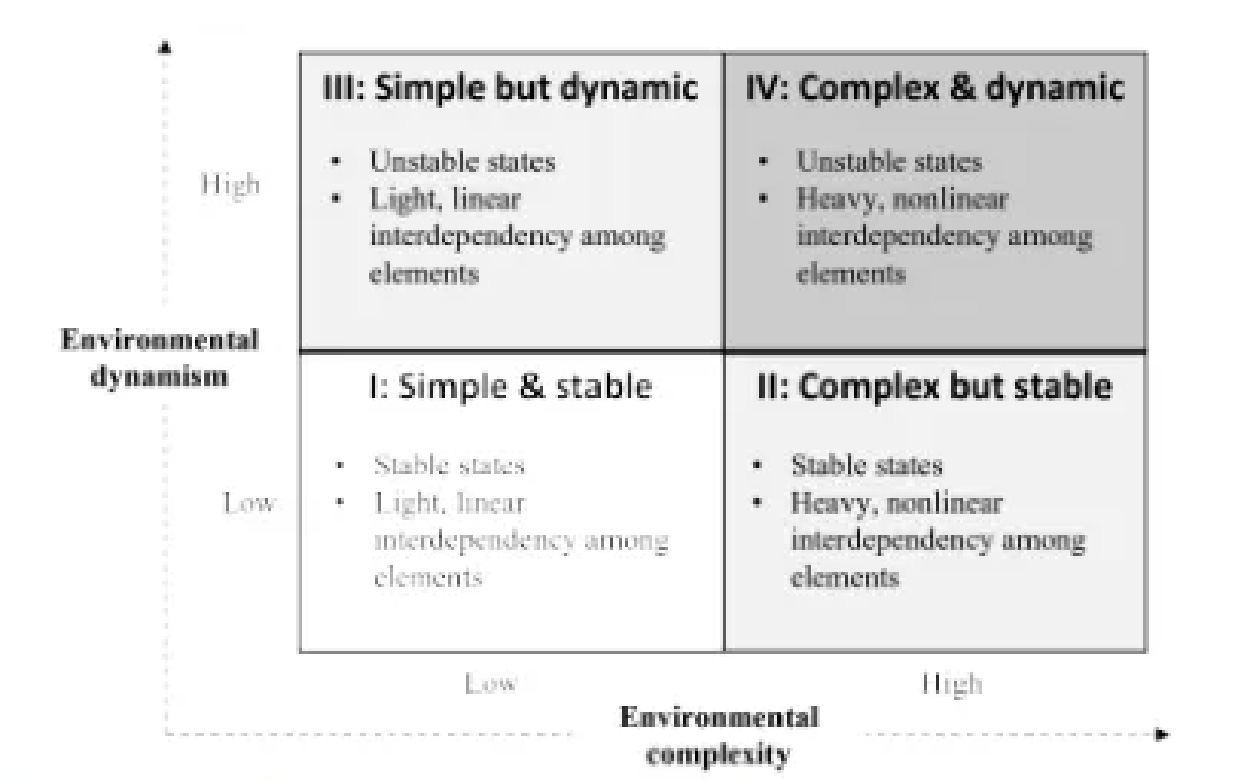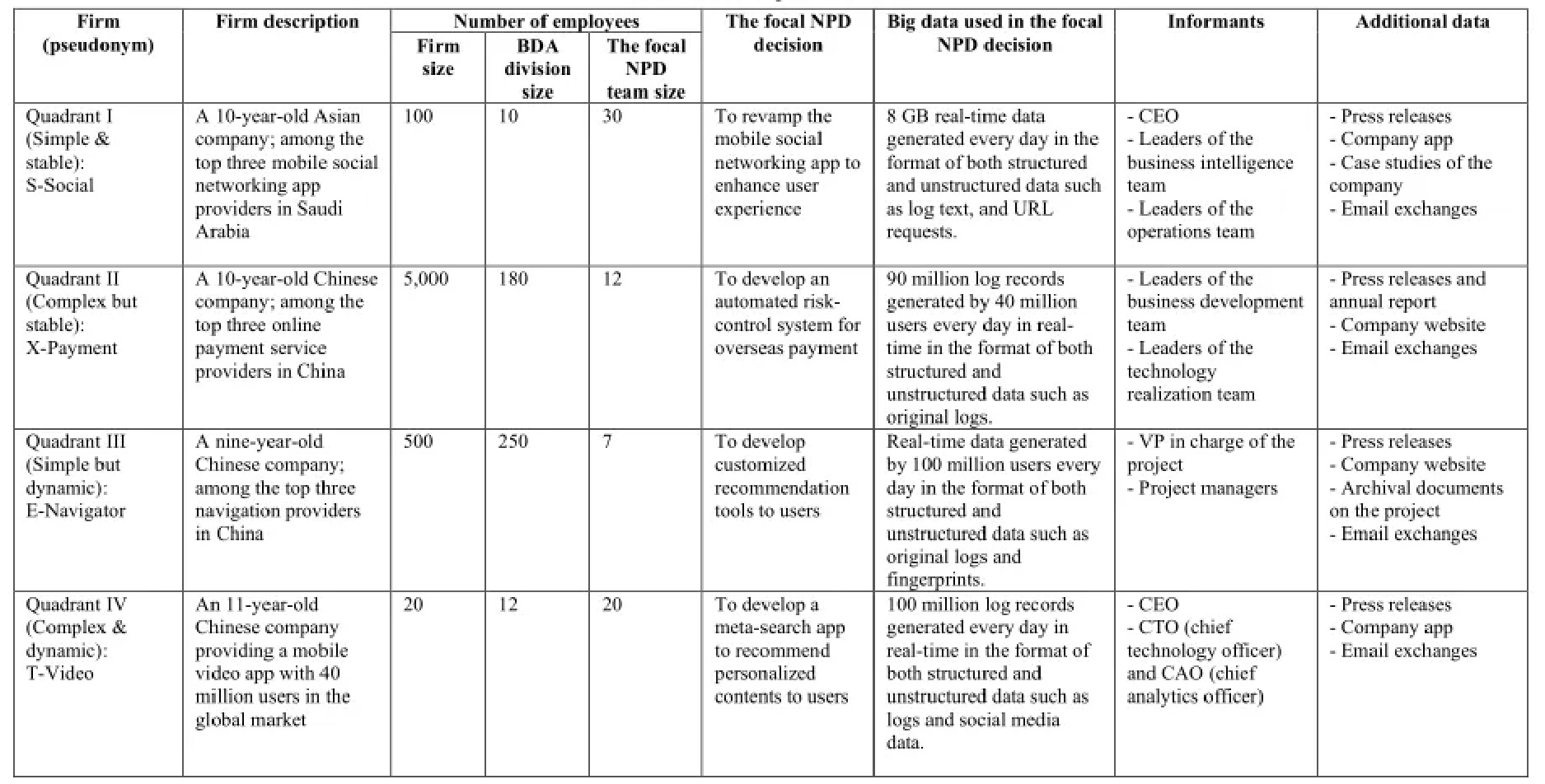If you need to improve the functionality of, for example, a social media profile or an app, one would very likely make decisions based on recommendations from an algorithm based on data about users’ needs and preferences.
However, once you are determined to take your business to emerging markets and are faced with the decision of which path to take for long-term development, do you trust your own business sense or do you callously follow the data collected and/or generated by a computer? After all, in the digital age, big data has become a powerful driving force in business, offering companies unprecedented opportunities and competitive advantages and profoundly influencing the strategic decisions of companies.

|
Image source: ©千库网 |
Strategic decisions help companies to clarify their future direction of development. These decisions not only influence how companies can sort through huge amounts of information and make smart decisions, but also how they can remain stable in a constantly changing market.
Against this backdrop, the question arises: Is data-driven decision-making more effective for strategic decisions, or is traditional decision-making based on human intuition more conducive to long-term development? What is the role and tension between the two? This question has attracted the attention of Professor CHEN Xi from the School of Management of Zhejiang University.
Recently, Professor CHEN Xi from the School of Management at Zhejiang University, together with domestic and international colleagues, published his research findings "How Does Big Data Analytics Shape Human Heuristics Adaptation in Strategic Decision Making? A Perspective of Environmental Uncertainty Contingencies" in the leading journal in the field of information systems, Journal Association for Information Systems (JAIS).
This study shows how big data analytics technology shapes and influences the decision-making patterns of organizations and strengthens strategic decision making in the face of widespread uncertainty in an ever-changing market environment.

JAIS is the flagship journal of the Association for Information Systems (ABS 4*).
Click here to access the journal article
As an important achievement of interdisciplinary research on "digital innovation and management", this research, which focuses on "digital decision making", has not only innovatively found that big data analysis technology changes the human decision-making model, but also explored the "optimal strategies and limitations of human-machine integration in corporate strategic decision-making", which is of significance to the academic community. It fills the research gap in this area, but also provides theoretical references and management inspiration for improving companies’ organizational decision-making models and increasing operational efficiency.
|
CHEN Xi | 陈熹 School of Management, Zhejiang University |
||
|
|
||
|
|
|
Academic Background: Professor of the School of Management, Zhejiang University, Director of the Department of Data Science and Management Science and Engineering, School of Management, Zhejiang University, and Qiushi Young Scholar of Zhejiang University. Research directions: Social media, social network analysis, social commerce, etc. You can learn more about Prof. CHEN Xi’s academic background here |
|
The Researchers Investigated the Integration of Humans and Machines from a Comprehensive Perspective |
It is common knowledge that big data analytics technology is widely used in various industries. In the manufacturing industry, companies can use data analysis to optimize their production processes and plan supply chain management; in the field of e-commerce, big data analysis technology can be used to understand user behavior data and establish more accurate marketing strategies; in the financial industry, financial institutions can evaluate credit risks, market trends, etc. through the analysis of market and customer data to formulate more scientific and reasonable business strategies.

|
Photo source: 新华社 |
The question of whether data-supported decision-making is more beneficial for companies or whether traditional decision-making based on human intuition is more conducive to development has led to fierce research and debate in the scientific community.
Some believe that big data analytics technologies can quickly identify the "objective truth" from vast amounts of data and correct for human subjective bias when making strategic decisions in companies, and therefore offer unparalleled benefits.
Others believe that algorithms only carry out predetermined missions, reflect data of short-term goals, and have no strategic long-term perspective on problems. In the face of an uncertain business environment, big data analytics technology may not be able to understand new market trends from existing data.
In addition, the results generated by the algorithms, especially the mechanism for generating the results of AI-driven big data analysis technology, are in a "black box", and we cannot get a transparent and accurate explanation.

|
Image: Envato Elements |
If we get caught up in the debate about which is better - data-driven decision-making or decision-making based on human intuition - we may overlook the interaction between the two.
CHEN Xi’s team recognizes that big data analytics technology has the advantage for businesses of being fast and comprehensive, while human business understanding is highly adaptable. When the two work together in decision-making, they can find the best solution in ever-changing situations.
In other words, integrating humans and machines is the best way to engage in strategic decision-making together. But what are the best strategies and boundaries for human-machine integration? What does their dynamic process look like? These questions have not yet been fully explored and investigated in the academic world.
With these questions in mind, CHEN Xi’s team has chosen "heuristic decision making in organizations" as the main theoretical perspective for their research. As a cognitive strategy, "heuristic decision-making" helps us understand how organizations think about and weigh various factors in the decision-making process and finally make a decision.
|
Researchers Have Created a Two-dimensional Theoretical Framework to Find Out Whether Data Technology Can Help Adapt to Uncertain Environments |
A company’s strategic decision-making process involves setting long-term goals and allocating resources, with the external environment constantly changing during the decision-making process. This dynamic requires companies to be flexible and adaptable in order to cope with the rapidly changing environment when making strategic decisions.
Considering this particular environmental factor, CHEN Xi’s team found that the question of whether big data analytics technology for business can help people adapt to uncertain environments has not yet been well answered. Therefore, they used the complexity and dynamics of the environment as a theoretical framework to show the differences in the interaction between business big data analytics technology and heuristic adaptation (Figure 1).

Figure 1 | Two-Dimensional Framework of Environmental Uncertainty
Environmental complexity refers to the extent to which the environment consists of a large number of elements that interact non-linearly with each other (Cilliers, 2002). As the complexity of the environment increases, it can be difficult for decision-makers to find relationships between the different elements, but big data analytics technology for business is good at discovering non-linear relationships and "finding appropriate reasons for decisions through causal loops among many possibilities."
Paradoxically, big data analytics techniques also introduce a large number of alternatives and heuristic clues that are usually incomprehensible to humans, unconsciously increasing complexity and potentially hindering the development of appropriate decision-making strategies.

|
Image source: ©千库网 |
Environmental dynamics refers to the speed and unpredictability of environmental change. In emerging markets, for example, where the market structure, competitors and customer needs change rapidly, the environmental dynamics of strategic decisions are high.
Decision-makers with business knowledge can meet the dynamic challenges with "a holistic and intuitive approach". Big data analytics technology for business can efficiently provide novel solutions, but it cannot operate outside the "given domain".
With the two-dimensional theoretical framework of environmental dynamics and complexity, we can more accurately grasp the external market environment that companies have to deal with when making strategic decisions in the digital age. It also helps us to understand the dynamic process in which big data analytics technology and human intuition are jointly involved in decision-making.
|
Based on Multiple Case Studies, the Researchers Observed How Big Data Analysis Technology Influences Decision-making |
To explore how big data analytics technology can help companies adjust their heuristic decisions under different complex and dynamic environmental conditions, CHEN Xi’s team selected four sample companies that needed to make strategic new product development (NPD) decisions to conduct research. The companies were in the fields of multimedia search engines, online payments, personalized recommendations and online social media platforms.
To ensure the validity and rigor of the research, two types of respondents were selected in each company: Experts from the business department (e.g. the CEO, the vice president, and the project manager in charge of each business) and experts from the data analytics department (e.g. the chief technology officer, the chief analytics officer and the project manager). After comprehensively collecting and studying the business background information and data analysis rules related to decision-making, CHEN Xi’s team conducted a coding analysis based on interview data, archival data, and company case studies (Table 1).

Table 1 | Description of Cases
Research has shown that big data analytics technology is changing the way people make decisions for companies. This change has three main modes: alternative reorientation, cue-patching, and relation conditioning. These modes help decision makers to updateand optimize their decision rules when faced with an uncertain environment.
When the environment is highly complex, business big data analytics technology optimizes the company’s heuristic decision making through a hybrid model of cue patching and relation conditioning. Using this model allows decision-makers to recognize cues and relationships that were previously ignored, improving the decision-making process.
When the environment is highly dynamic, business big data analytics technology adapts primarily through the solution redirection mode, which enables decision-makers to updatetheir alternative solutions in a timely manner to keep pace with changing market conditions and user requirements.

|
Image source: ©千库网 |
On the other hand, this study has also shown that the effectiveness of big data analytics technologies for companies can be limited if the environment is very complex and dynamic. In this case, decision-makers need in-depth business insights to further adapt and optimize the company’s heuristic decisions.
This shows that although business big data analytics provides data support, human judgment is still essential in complex and dynamic environments and can support business big data analytics technology.
|
How to Find the "Optimal Option" for Strategic Decisions? |
Many companies rely too much on the results of data analysis and ignore the importance of human intuition in decision-making. This one-sided view can lead to blind spots in decision-making and even distort strategic direction.
This study shows that in a business environment with high uncertainty, both big data analytics and human judgment should be valued. Only when both work together and complement each other can companies assess the situation more comprehensively and formulate more precise strategies.
Especially in a dynamic market environment with rapid technological changes and changing customer requirements, decision-makers need to make quick and accurate decisions. Big data analytics technology for businesses can provide real-time data to verify the effectiveness of different strategies and solutions.
When the market environment is complex, business big data analytics technology can analyze complex data patterns, updateinformation for decision-making, and help decision-makers explore the potential relationships needed for decision-making, thus making strategies more precise.
When an organization is in a dynamic and complex environment, such as an emerging market, it is not enough to rely only on data analytics technology to grasp the market logic. It must be complemented by the sharp market understanding of decision-makers to compensate for the limitations of technology.

|
Image source: ©千库网 |
To manage the opportunities and challenges that big data brings, many companies are adopting the "hub and spokes" structure (Jackson, 2009), where the central data department (hub) is responsible for data coordination, and the surrounding business departments (spokes) such as sales, marketing, production, etc. usually extract data from the center to subsequently support decision-making.
The research innovation proposes an organizational structure model that is conducive to strategic decision-making in companies: In the early stages of decision-making, Big Data analysts from the center can penetrate deep into the various business departments and participate in decision-making together, instead of being limited to after-the-fact data consulting.
Big data analytics technology and adaptive heuristics do not exist in isolation, but complement each other. The organic combination of the two is beneficial for companies to understand the pulse of the market and accurately grasp the direction of development in the big data era.
|
- This research by CHEN Xi and his team corrects the widely held view that big data analytics technology replaces or hinders human decision-making, and reveals the patterns and optimal ways for organizations to make strategic decisions in a complex and dynamic business environment. We thank the researchers for filling the gap in relevant research in the field of information systems and provides useful suggestions and inspiration for building decision-making organizations in companies that are adapting to the digital age.
- You can read the original article in Chinese here